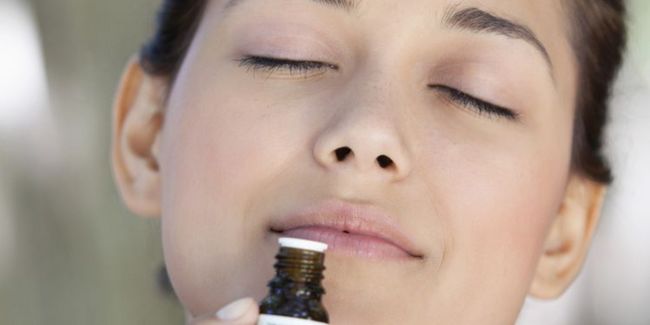Here, I would do myself a little session of vaporizer me ….
I'm already thinking about the scent in the mouth and the smell of this vaporization session which should be super nice!
But this perfume and smell, where does it come from?
How can the plant have such a pleasant scent?
Hop, a little research and I learn that it would come from a molecule called terpene .…
Terpenes!!!?? So what's this thing???
Let's take a closer look, just to find out more.
Will it save me from answering with a "Gne?"next time I'm told about it!
At the same time I could make a topo of what a terpene story to die less stupid …
The Terpenes
So I learn that terpenes are present in plants.
This would give different varieties their smell and some of their effects or properties!
Thus, a "terpene," according to the basic definition in chemistry, is "a group of unsaturated volatile hydrocarbons present in the essential oils of plants.»
In other words, it is the group of molecules in carbonated plant matter that give plants their smell and protect them from bacteria, fungi and insects.
To make it simpler and to understand…
Imagine walking in the forest or in a very, very large garden after the rain.
There's this special smell!
This is the smell of terpenes that comes from wet plants and trees.
It is also this mysterious intoxicating fragrance that felt after passing the mower in the garden.
Or the scent of the rose or the tulip…
The discovery of the Terpenes
The name comes from the German word Terpen (1866) from das Terpentin: turpenthin.
The Francise loan "terpene" dates from the end of the 19th century (1871).
In the strict sense, terpenes are hydrocarbons but many derivatives (alcohols, adehydes, ketones, acids) of related structures are considered terpenic compounds.
They are present, in plants of which they are often the constituents of "scent" (turpentine, camphor, menthol, lemongrass).
They are extracted in the form of essential oils for perfumery.
Some of them have an important biological role (hormones, vitamins).
Most Terpenes are the fragrant principle of plants.
This odor is due to the release of highly volatile molecules containing 10, 15, 20 carbon atoms.
These molecules can be used as a condiment (girofle) or as a perfume (pink, lavender).
Many terpenic molecules have antiseptic properties (Girofle, thymol, eucalyptol, camphor, etc.).
Historically, terpenes have been used extensively for embalming, hence the balsamic term given to the plants and oils that contain them.
Terpene in aromatherapy
In a very interesting and medical way, terpenes interact directly with receptors and neurotransmitters in the human system.
They can combine or dissolve in fats.
Terppenes appear to act, as do anti-depressants, as serotonin reuptake inhibitors
They also increase dopamine activity, which can improve mood.
However, because of the lack of research on terpenes in general, and on cannabinoid terpens in particular the understanding of the medicinal impact is still in its infancy.
In 2015, the Australian Government's Department of Health published the results of an analysis of aromatherapy as an alternative health treatment.
Unfortunately, it was classified, among 16 others as having "no definitive medical efficacy".
The hidden side of terpenes
Essential oils, whether applied locally or ingested, are known to have many beneficial effects.
However, some are known to be irritants, especially in the context of overexposure or over-ingestion.
Eucalyptus, for example, can be toxic in some cases.
List of some known terpenes
borneol
Borneol is also present in rosemary and has a fresh, menthol flavour.
With a long history in Chinese medicine, this terpene acts as a local anesthetic and has anti-spasmodic properties.
Caryophyllene
This terpene, which is very spicy, is only found in black pepper and cloves or cannabis.
It has strong anti-inflammatory and analgesic properties.
Eucalyptol
Surprisingly, this eucalyptus-scented terpene is also present in the Eucalyptus plant.
It seems that this terpene has properties to relieve pain and improve concentration.
limonene
This terpene that has a citrus smell is present in lemon, pine and mint.
Limonene is best known for its anti-fungal and anti-bacterial properties.
It also acts as an anti-carcinogen and could help prevent the growth of tumours.
Linanol
With a floral aroma of lavender, this terpene creates a sedative effect that is frequently used to treat anxiety.
It also has anti-epileptic and anti-convulsive properties.
Linalol is currently being studied in the treatment of cancer.
Myrcene
Myrcene, which is also present in hops, is one of the most common terpenes.
It is frequently described as having an aroma similar to cloves.
Slightly sedative with calming effects, it is known to be anti-inflammatory and may increase the psychoactive effects of THC.
Nerolidol
Nerolidol is present not only in cannabis but also in ginger, lemongrass and niaouli.
This terpene smells like fresh bark.
It is used to treat fungal infections but also malaria.
It has a calming and sedative effect.
pinene
This terpene smells like pine, but it is also present in rosemary and sage.
It has antiseptic and anti-inflammatory properties and can also positively affect memory, increase energy and improve concentration.
Pulegone
This terpene smells like mint or rosemary.
It is frequently used to treat Alzheimer's disease and can be harmful to the liver in large quantities.
Terpineol
Terpineol smells like lilac.
It is frequently used in the production of cosmetics and perfumes.
In summary
I hope, like me, you know a little more about terpenes and their use!




